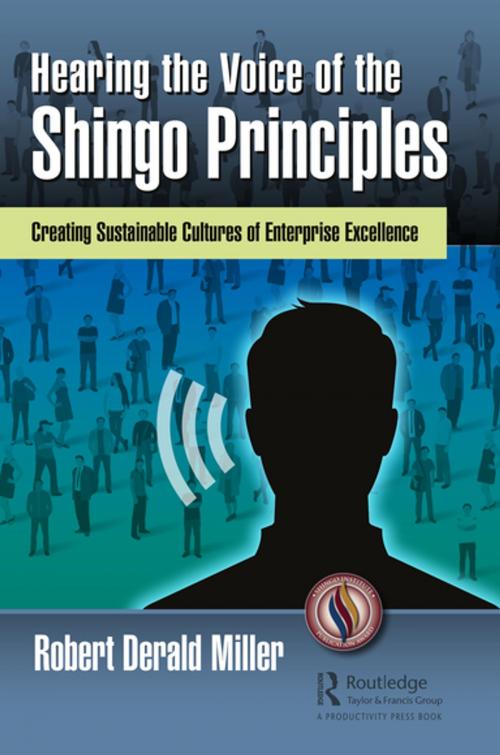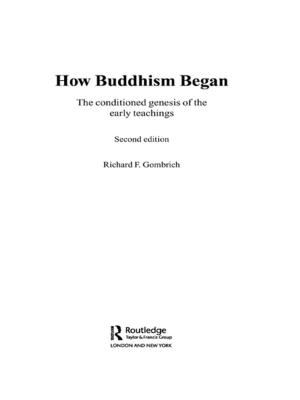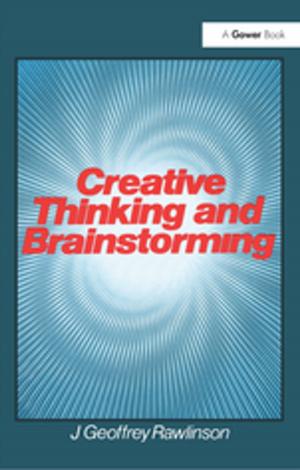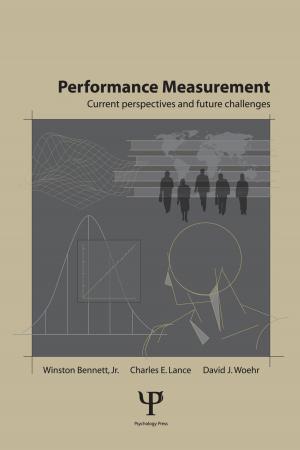Hearing the Voice of the Shingo Principles
Creating Sustainable Cultures of Enterprise Excellence
Business & Finance, Business Reference| Author: | Robert Derald Miller | ISBN: | 9781351173988 |
| Publisher: | Taylor and Francis | Publication: | June 26, 2018 |
| Imprint: | Productivity Press | Language: | English |
| Author: | Robert Derald Miller |
| ISBN: | 9781351173988 |
| Publisher: | Taylor and Francis |
| Publication: | June 26, 2018 |
| Imprint: | Productivity Press |
| Language: | English |
This book chronicles key insights that went into development of the Shingo Model for Enterprise Excellence. For more than 50 years, organizations of all types have struggled to achieve lasting benefits from the many tools and programs associated with various continuous improvement initiatives. In fact, the notion of 'continuous' improvement is largely a misnomer -- for many organizations, continuous improvement has been anything but continuous.
While responsible for the Shingo Prize, the author observed that even recipients, theoretically the best of the best, were experiencing this same up-and-down phenomenon. It was as though theese compaines were reviewed and analyzed on their very best days but then declining from that point forward.
To build long-term credibility of the Shingo Prize, the author and his team had to understand what was causing such wide variation in results and make certain they were only recognizing those businesses that were able to demonstrate sustainability of improvements over the long term. Sustainability depended less on application of the tools for improvement than it did on embedding the key concepts, or principles, into the culture of the organization from top to bottom.
This realization led the author and his team to determine what the key principles of Enterprise Excellence were and how to best embed these principles into the belief and behavioral systems of the enterprise; top to bottom and side to side. This book is based on these insights, the author's personal experiences from more than r 40 years in business, and the lessons learned while teaching these principles to hundreds of companies on many continents over 10 years.
This book describes for leaders why and how to shift their focus from primarily results to both results and behaviors. It helps leaders to see how their singular focus on achieving results is usually done at the expense of creating sustainability of those results -- the unintended consequence of failing to focus on building a great culture.
The goal is for leaders, managers, and front- line associates to understand each of the 10 guiding principles taught over the past 50 years from key thought leaders such as Shingo, Shewhart, Deming, Covey, Ono, and Toyoda.
Leaders will understand their role in building culture, on what they must ground the culture and how to keep the entire enterprise focused on guiding principles that will change beliefs, behaviors and ultimately the culture. Managers will learn how to align systems with principles so that they drive ideal behaviors that are principle based. They will learn how to teach principles to their associates so that they become self-motivated to continuously improve the aspects for which they are accountable.
This book chronicles key insights that went into development of the Shingo Model for Enterprise Excellence. For more than 50 years, organizations of all types have struggled to achieve lasting benefits from the many tools and programs associated with various continuous improvement initiatives. In fact, the notion of 'continuous' improvement is largely a misnomer -- for many organizations, continuous improvement has been anything but continuous.
While responsible for the Shingo Prize, the author observed that even recipients, theoretically the best of the best, were experiencing this same up-and-down phenomenon. It was as though theese compaines were reviewed and analyzed on their very best days but then declining from that point forward.
To build long-term credibility of the Shingo Prize, the author and his team had to understand what was causing such wide variation in results and make certain they were only recognizing those businesses that were able to demonstrate sustainability of improvements over the long term. Sustainability depended less on application of the tools for improvement than it did on embedding the key concepts, or principles, into the culture of the organization from top to bottom.
This realization led the author and his team to determine what the key principles of Enterprise Excellence were and how to best embed these principles into the belief and behavioral systems of the enterprise; top to bottom and side to side. This book is based on these insights, the author's personal experiences from more than r 40 years in business, and the lessons learned while teaching these principles to hundreds of companies on many continents over 10 years.
This book describes for leaders why and how to shift their focus from primarily results to both results and behaviors. It helps leaders to see how their singular focus on achieving results is usually done at the expense of creating sustainability of those results -- the unintended consequence of failing to focus on building a great culture.
The goal is for leaders, managers, and front- line associates to understand each of the 10 guiding principles taught over the past 50 years from key thought leaders such as Shingo, Shewhart, Deming, Covey, Ono, and Toyoda.
Leaders will understand their role in building culture, on what they must ground the culture and how to keep the entire enterprise focused on guiding principles that will change beliefs, behaviors and ultimately the culture. Managers will learn how to align systems with principles so that they drive ideal behaviors that are principle based. They will learn how to teach principles to their associates so that they become self-motivated to continuously improve the aspects for which they are accountable.















